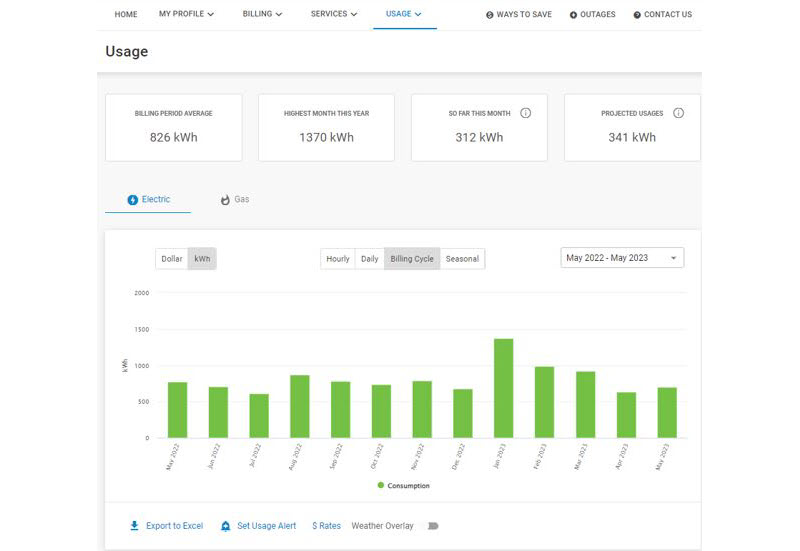Step 1. Know what's “normal for you.”
Log in to My Account and select the Usage tab at the top. Then select Usage Overview. You’ll see a chart of your usage over the past year. Use this to understand what your normal usage is – both overall and at different times of year. Determine a usage number of kilowatt-hours or therms you'd like to trigger a notification if you reach it.

Step 2. Calculate your alert amount.
Looking to make energy-saving changes? Take your average kWh usage and subtract 5%, 10% or 15%. The energy-savings goal is up to you!
Just want to maintain? Use the Billing Period Average above the chart. Or, base your number on the amount you used this month last year.
Step 3. Set up alerts.
In the My Profile tab in My Account, click Notification Preferences. Then select High Usage on and off button to set up alerts.
Check the kilowatt-hours or therms box and enter the number you determined in Step 2. Click Save.
Step 4. Choose how to receive alerts.
In the same area as Set up alerts, indicate how you'd like to receive alerts: Text, Email, or Voice via the Select Channel drop down menu. Then enter phone number and email.
How do I know what number to choose for alerts?
1. Know what's “normal for you.” Use My Account to get a sense of your average usage.
Log in to My Account and select the Usage tab at the top. You’ll see a chart of your usage over the past year.
- Hover over the months to get a sense of your usage, or look at the Billing Period Average above the chart.
- Since your use changes with the seasons, check how much you used this time last year.
2. Determine your alert amount.
Looking to make energy-saving changes? Take your normal kWh usage and subtract 5%, 10% or 15%. The energy-savings goal is up to you!
Just want to maintain? Use the Billing Period Average above the chart. Or, base your number on the amount you used this month last year.
Shoot! I hit my limit. What happens now?
Don’t worry, you won’t get shut off for hitting your limit! But, it may be time for a family talk about energy-saving behaviors.
See our best tips for saving energy.




